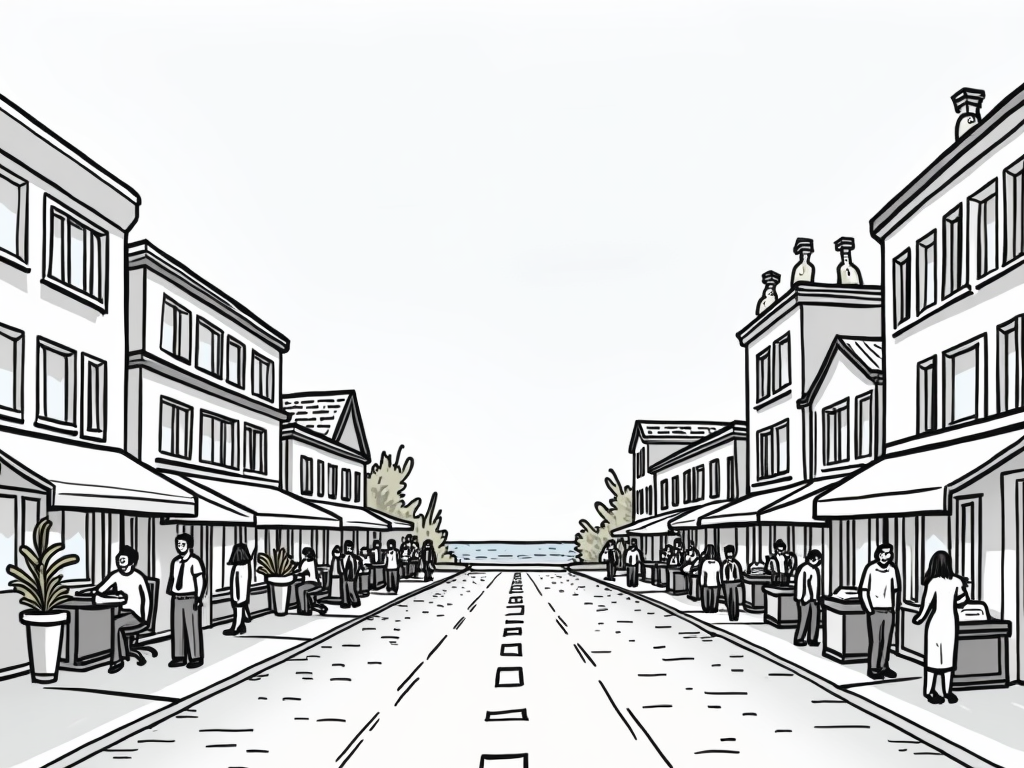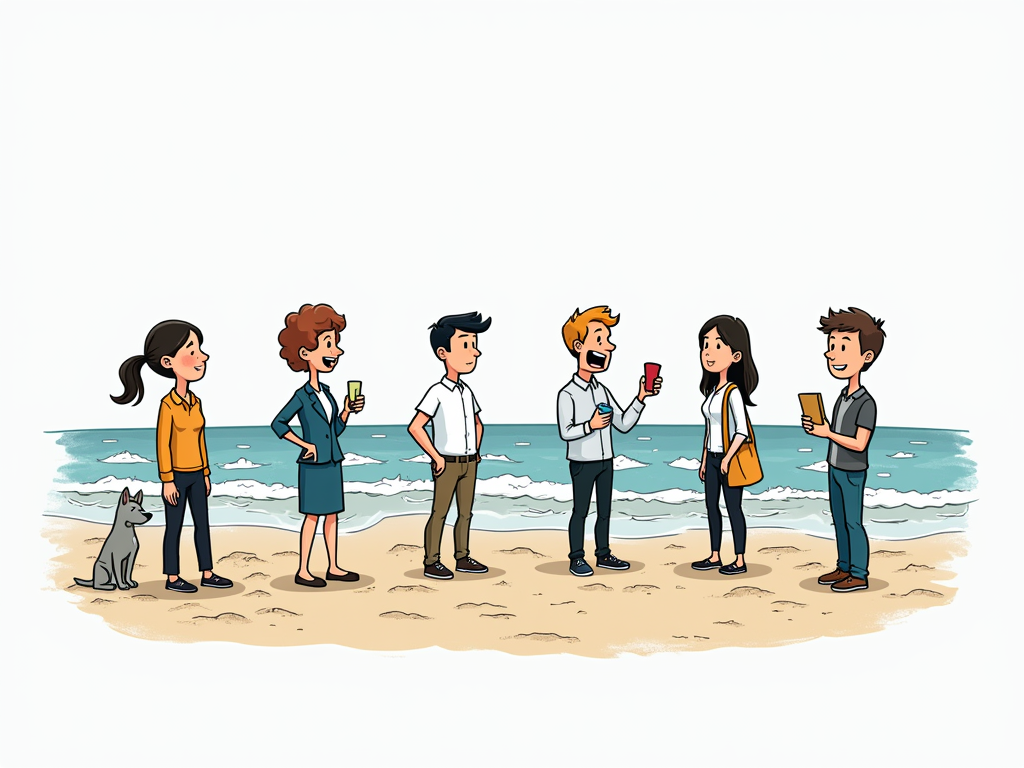
Greek Property Investment: Unlocking the Potential of Coastal vs. Inland Opportunities
Reading time: 8 minutes
Table of Contents
- Introduction: The Greek Property Landscape
- Coastal Properties: Sun, Sea and Investment Returns
- Inland Properties: Hidden Gems and Authentic Experiences
- Direct Comparison: Coastal vs. Inland Investments
- Investor Experiences: Real-World Case Studies
- Legal Considerations for Foreign Investors
- Crafting Your Greek Property Investment Strategy
- Frequently Asked Questions
Introduction: The Greek Property Landscape
Standing at the crossroads of decision-making about where to buy house in greece? You’re not alone. The allure of Hellenic property has captivated investors worldwide, presenting a fascinating dichotomy: the sun-drenched coastal regions versus the authentic charm of inland territories.
Greece’s real estate market has experienced a remarkable resurgence since the financial crisis, with property prices in prime locations increasing by 7.7% in 2022 alone according to the Bank of Greece. This revival presents diverse opportunities, each with distinct advantages and considerations.
Whether you’re drawn to the azure waters of the Aegean or the rustic tranquility of mountainous villages, your investment choice reflects not just financial calculations but lifestyle aspirations. Let’s navigate these waters together, uncovering the nuances that distinguish coastal from inland investments in this timeless Mediterranean haven.
Coastal Properties: Sun, Sea and Investment Returns
The siren call of Greek coastal properties is undeniable. Imagine waking up to panoramic sea views, with sunlight dancing across crystalline waters. Beyond aesthetic appeal, these properties represent substantial investment potential—but come with specific considerations worth understanding.
Rental Potential and Tourism Appeal
Coastal properties in Greece aren’t just homes; they’re income-generating assets with remarkable staying power. With Greece attracting a record-breaking 32.7 million international visitors in 2023 according to the Greek Tourism Confederation, coastal property owners enjoy substantial rental advantages:
- High-season premium: Coastal properties command 40-60% higher rental rates during peak summer months compared to inland alternatives
- Extended rental season: The Mediterranean climate extends viability beyond summer, with shoulder seasons increasingly popular among Northern European visitors
- Diverse rental formats: From luxury short-term stays to seasonal leases, coastal properties offer flexible monetization options
“The Greek coastal property market represents one of the most resilient sectors in Mediterranean real estate,” notes Elena Papadopoulos, Head of Research at Athens Property Analytics. “Even during economic turbulence, prime coastal locations maintain their appeal—particularly those combining proximity to airports with authentic character.”
Market Trends and Price Dynamics
Let’s talk straight: coastal property investments come with both advantages and challenges that directly impact your returns.
The price premium for sea views ranges from 20-35% above comparable inland properties, according to recent market analyses. However, this premium varies dramatically based on specific factors:
- Island premium: Properties on Mykonos and Santorini command 2-3x higher prices than mainland coastal alternatives
- Infrastructure access: Properties within 30 minutes of international airports typically command 15-25% higher valuations
- Development potential: Areas with favorable building regulations for expansion or renovation see faster appreciation
Consider this practical scenario: A 120m² villa in Chalkidiki with sea views currently averages €320,000, while a comparable mainland coastal property near Kalamata might cost €230,000. Both offer rental yields between 4-7% depending on management quality, but the lower entry point in emerging coastal markets can mean greater long-term appreciation.
Inland Properties: Hidden Gems and Authentic Experiences
While coastal properties catch the spotlight, inland Greek properties represent compelling alternatives that increasingly attract discerning investors seeking authenticity, value, and cultural immersion.
Historical Charm and Cultural Integration
Inland Greece unveils a different narrative—one of stone-built villages, ancient olive groves, and communities where traditions remain vibrantly alive. These properties offer distinct advantages for certain investor profiles:
- Architectural authenticity: Many inland properties feature historical elements like stone walls, wooden beams, and traditional construction techniques
- Cultural immersion: Owners integrate into genuine Greek communities rather than tourist-focused environments
- Four-season appeal: Unlike some coastal areas that quiet dramatically in winter, many inland towns maintain year-round vitality
Dimitris Karatzas, a restoration specialist focusing on historical properties, observes: “The inland property market attracts a different investor profile—one seeking connection to authentic Greece. These buyers often develop deeper community ties and experience a Greece that coastal visitors rarely encounter.”
Long-term Investment Value
Inland properties present distinct financial considerations that smart investors recognize:
- Lower entry barriers: Purchase prices typically range 30-50% below comparable coastal properties
- Renovation potential: Many inland properties offer significant value-adding renovation opportunities
- Growing alternative tourism: Agritourism, cultural tourism, and authentic experiences increasingly drive inland property demand
Take this real-world example: An investor purchased a traditional stone house in the Peloponnese region for €85,000 in 2018. After a €45,000 renovation maintaining historical elements while adding modern comforts, the property now generates €12,000 annually through agricultural tourism and winter rentals to remote workers—representing a yield exceeding 9% on total investment.
The past five years have seen inland property prices in regions like Epirus and Central Greece increase 15-20% as infrastructure improvements and changing tourism patterns drive interest in authenticity.
Direct Comparison: Coastal vs. Inland Investments
| Investment Factor | Coastal Properties | Inland Properties | Key Considerations |
|---|---|---|---|
| Initial Investment | €250,000-€750,000 for standard 2-3 bedroom property | €80,000-€250,000 for comparable space | 30-60% premium for coastal locations |
| Annual Rental Yield | 5-8% gross yield (seasonal peaks) | 3-9% gross yield (more consistent) | Coastal properties offer higher peak yields but more seasonality |
| Maintenance Costs | 3-5% of property value annually | 2-4% of property value annually | Salt air and exposure increase coastal maintenance needs |
| Capital Appreciation (5yr) | 25-40% in prime areas | 15-30% in developing regions | Higher coastal appreciation but from higher base investment |
| Occupancy Patterns | 70-95% (June-September), 20-40% (off-season) | 40-60% year-round, with less seasonal fluctuation | Inland properties offer more consistent occupancy |
5-Year Return on €200,000 Investment (Visualization)
Note: Returns include rental income and capital appreciation, before taxes and fees.
Investor Experiences: Real-World Case Studies
Coastal Investment: The Kastellorizo Transformation
Michael and Sarah, a British couple, purchased a dilapidated fisherman’s cottage on Kastellorizo island for €180,000 in 2017. They invested an additional €120,000 in authentic restoration, maintaining traditional architectural elements while modernizing amenities.
Their investment journey reveals important coastal property insights:
- Property value increased to approximately €420,000 by 2023 (40% appreciation)
- Annual rental income averages €32,000 (May-October occupancy)
- Winter vacancy allows personal use during ideal months
- Key challenge: Renovation logistics and material transport to the remote island added 30% to renovation costs compared to mainland equivalent
“The primary lesson,” Michael shares, “was understanding that island properties magnify both the rewards and challenges of coastal investment. Finding reliable local partners proved essential for navigating permits and construction logistics.”
Inland Discovery: The Peloponnese Restoration
Elena, a German architect, took a different approach, purchasing a stone farmhouse with 2 hectares of olive groves in the Peloponnese for €95,000 in 2019. Her €75,000 renovation preserved rustic elements while creating a modern living experience.
Her experience highlights inland investment patterns:
- Property currently valued at approximately €230,000 (35% appreciation on total investment)
- Rental income focuses on 3-4 week cultural immersion experiences rather than brief stays
- Agricultural component (olive oil production) provides additional income and authentic experiences for guests
- Lower maintenance costs allow reinvestment in property improvements
“The inland investment offered something unexpected,” Elena notes. “Beyond financial returns, it provided deeper connection to Greek traditions and community. My guests specifically seek authentic experiences away from tourist centers, allowing premium pricing despite the inland location.”
Legal Considerations for Foreign Investors
Navigating Greek property law presents distinct challenges depending on your investment location:
Coastal-Specific Regulations:
- Border area restrictions affect foreign buyers in certain coastal regions, particularly near Turkey, where additional permits may be required
- Construction limitations within 500m of shorelines impose strict building height and footprint regulations
- Protected archaeological zones near coastal historical sites may restrict renovation options
Inland Property Considerations:
- Agricultural land designations may limit development potential without rezoning
- Traditional settlement protections in historical villages create renovation constraints but preserve property value
- Infrastructure connection costs can be higher in remote inland locations
Alexandros Petridis, a Greek property law specialist, advises: “Foreign investors should conduct thorough due diligence regardless of location, but coastal properties especially require verification of sea proximity regulations and potential future development that might affect views or access. The law firm you select should have specific experience in your target region, as local interpretation of regulations varies significantly.”
Crafting Your Greek Property Investment Strategy
The coastal versus inland decision ultimately revolves around aligning property selection with your investment objectives and personal preferences. Consider these strategic approaches:
The Hybrid Approach
Some savvy investors are pursuing a balanced portfolio strategy:
- Primary investment in an established coastal location with proven rental history
- Secondary investment in an emerging inland area with lower entry costs
- This combined approach provides both immediate income and long-term appreciation potential
The Value-Add Strategy
For investors with renovation skills or reliable contractor relationships:
- Focus on undervalued properties requiring modernization
- Inland properties typically offer greater renovation ROI due to lower initial purchase prices
- Strategic improvements like adding a small pool to an inland property can dramatically increase rental appeal
Pro Tip: Consider proximity to emerging tourism patterns. Areas developing new hiking trails, food tourism routes, or cultural festivals often see property value increases preceding broader market awareness.
Whichever path you choose, successful Greek property investment requires thinking beyond simple coastal/inland distinctions to the specific micro-market dynamics of your target region.
Frequently Asked Questions
What additional costs should I budget for when purchasing Greek property?
Beyond the purchase price, budget for approximately 8-12% in additional costs, including: property transfer tax (3.09% for properties with building permits issued before 2006), legal fees (1-2%), notary fees (0.8-1%), real estate agent commission (2-3%), and property registration fees (0.3-0.5%). Coastal properties may incur additional costs for specialized surveys and permits, particularly if near archeological sites or in border regions.
How does the Greek Golden Visa program affect property investment decisions?
The Greek Golden Visa program requires a minimum investment of €250,000 in real estate to qualify for residency. This threshold influences property dynamics differently in coastal versus inland areas. In prime coastal locations, this minimum barely covers entry-level properties, while inland, the same investment can secure substantial properties with renovation potential. Since 2023, certain high-demand areas including central Athens, Thessaloniki, and several islands have increased this threshold to €500,000, making inland investments more attractive for residency-motivated buyers.
What are the most overlooked factors when comparing coastal and inland Greek properties?
Many investors underestimate the significance of year-round community vibrancy. Some picturesque coastal villages become virtual ghost towns in winter, affecting both quality of life for residents and property security. Conversely, the accessibility factor is often overlooked for inland properties—while purchase prices may be lower, factor in transportation costs for both yourself and potential renters. Finally, climate considerations vary dramatically: coastal properties benefit from sea breezes during summer heat but face harsher winter conditions from salt exposure, while inland properties may require more substantial heating systems but often age better due to drier conditions.

Article reviewed by Marco Rossi, Private Equity Portfolio Director | Transforming Distressed Assets into High-Performance Investments, on May 15, 2025





